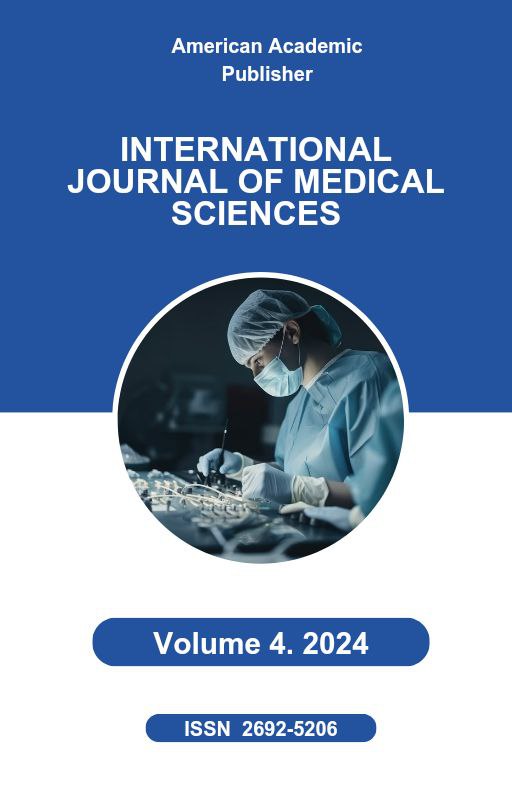 Articles
| Open Access |
https://doi.org/10.55640/
Articles
| Open Access |
https://doi.org/10.55640/
THE RELATIONSHIP BETWEEN HORMONAL DISORDERS AND UTERINE BLEEDING
Abdubokieva Feruza Baratovna , City interdistrict perinatal center No. 1., Obstetrician-GynecologistAbstract
This article examines the complex relationship between hormonal disorders and uterine bleeding, highlighting how disruptions in the endocrine system affect menstrual cycle regulation. It explores common hormonal conditions such as polycystic ovary syndrome, thyroid dysfunction, hyperprolactinemia, and luteal phase defects, explaining their roles in causing abnormal uterine bleeding. The article also discusses diagnostic approaches and treatment options aimed at restoring hormonal balance and managing bleeding disorders. Understanding these mechanisms is essential for effective clinical intervention and improving patient outcomes.
Keywords
hormonal disorders, uterine bleeding, abnormal uterine bleeding, polycystic ovary syndrome, thyroid dysfunction, hyperprolactinemia, luteal phase defect, menstrual irregularities, endocrine system, menstrual cycle regulation.
References
Azziz, R., Carmina, E., Chen, Z., et al. (2016). Polycystic ovary syndrome. Nature Reviews Disease Primers, 2, 16057. https://doi.org/10.1038/nrdp.2016.57
Rotterdam ESHRE/ASRM-Sponsored PCOS Consensus Workshop Group. (2004). Revised 2003 consensus on diagnostic criteria and long-term health risks related to polycystic ovary syndrome. Fertility and Sterility, 81(1), 19–25. https://doi.org/10.1016/j.fertnstert.2003.10.004
Krassas, G. E., Poppe, K., & Glinoer, D. (2010). Thyroid function and human reproductive health. Endocrine Reviews, 31(5), 702–755. https://doi.org/10.1210/er.2009-0041
De Leo, S., Lee, S. H., & Braverman, L. E. (2016). Hyperthyroidism. The Lancet, 388(10047), 906–918. https://doi.org/10.1016/S0140-6736(16)00278-6
Molitch, M. E. (2017). Diagnosis and treatment of pituitary adenomas: a review. JAMA, 317(5), 516–524. https://doi.org/10.1001/jama.2016.19699
Critchley, H. O., Maybin, J. A., Armstrong, G. W., & Williams, A. R. (2006). Physiology of the endometrium and regulation of menstruation. Physiological Reviews, 96(3), 1027–1071. https://doi.org/10.1152/physrev.00022.2015
Burger, H. G., Dudley, E. C., Hopper, J. L., et al. (2007). The endocrinology of the menopausal transition: a cross-sectional study of a population-based sample. The Journal of Clinical Endocrinology & Metabolism, 92(11), 4454–4460. https://doi.org/10.1210/jc.2007-0587
Fraser, I. S., Critchley, H. O. D., Broder, M., & Munro, M. G. (2011). The FIGO recommendations on terminologies and definitions for normal and abnormal uterine bleeding. Seminars in Reproductive Medicine, 29(5), 383–390. https://doi.org/10.1055/s-0031-1287668
Article Statistics
Downloads
Copyright License

This work is licensed under a Creative Commons Attribution 4.0 International License.

